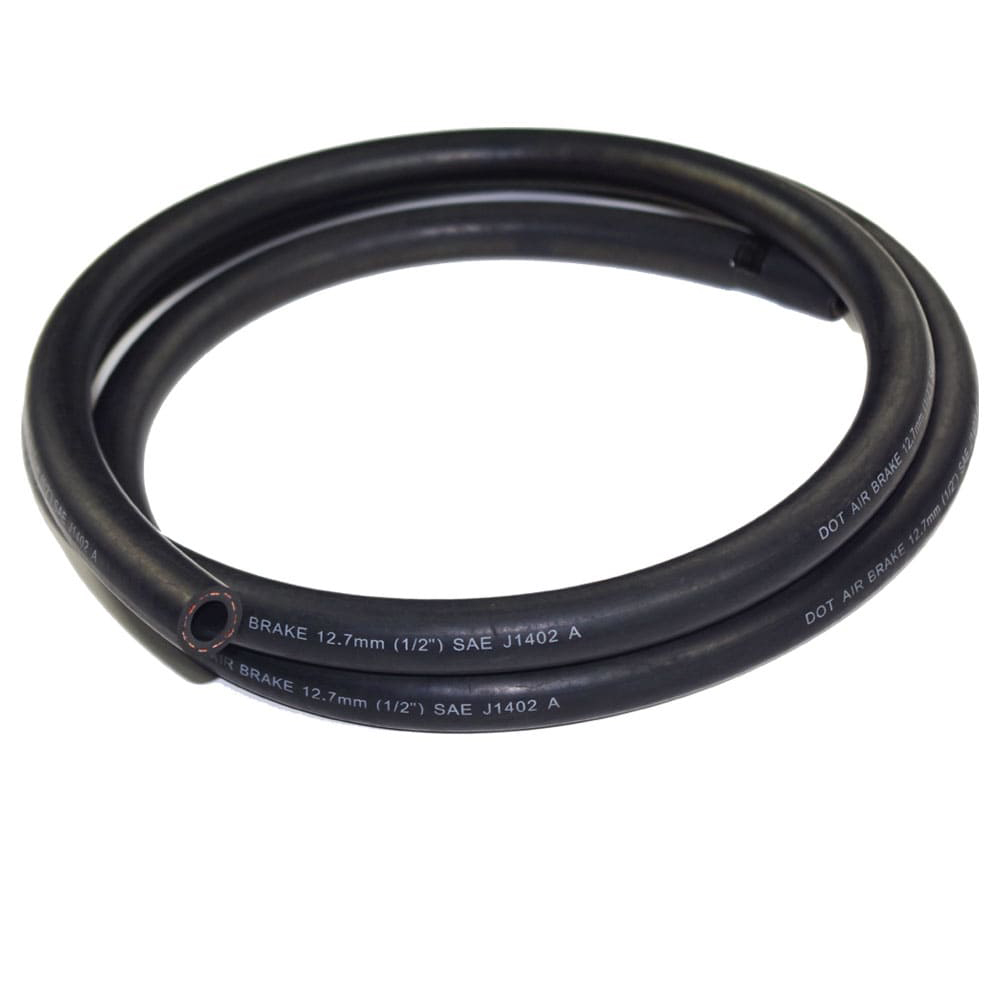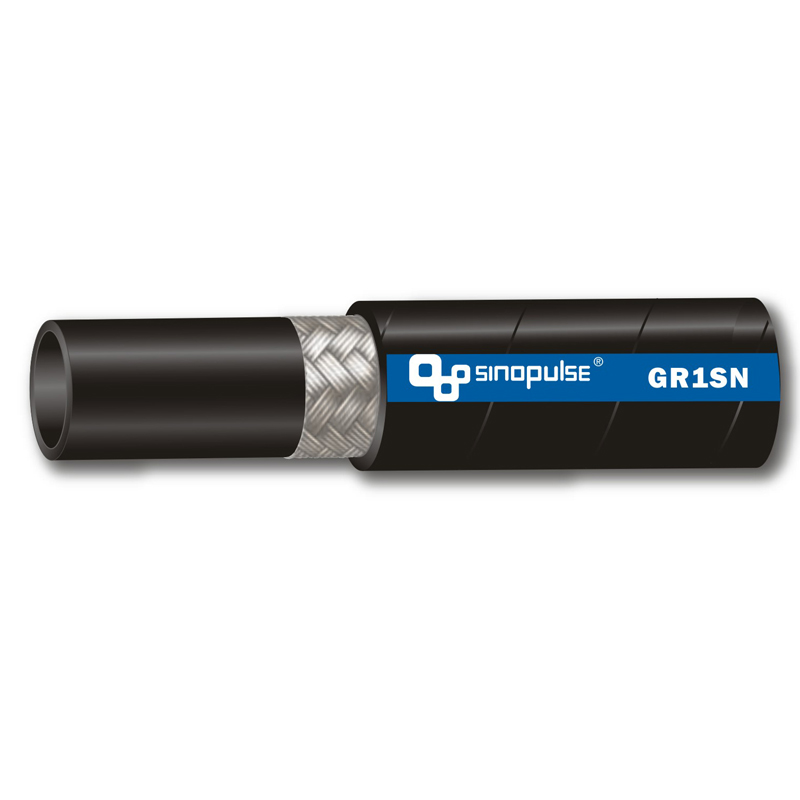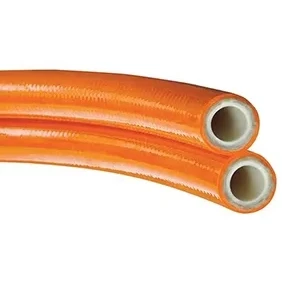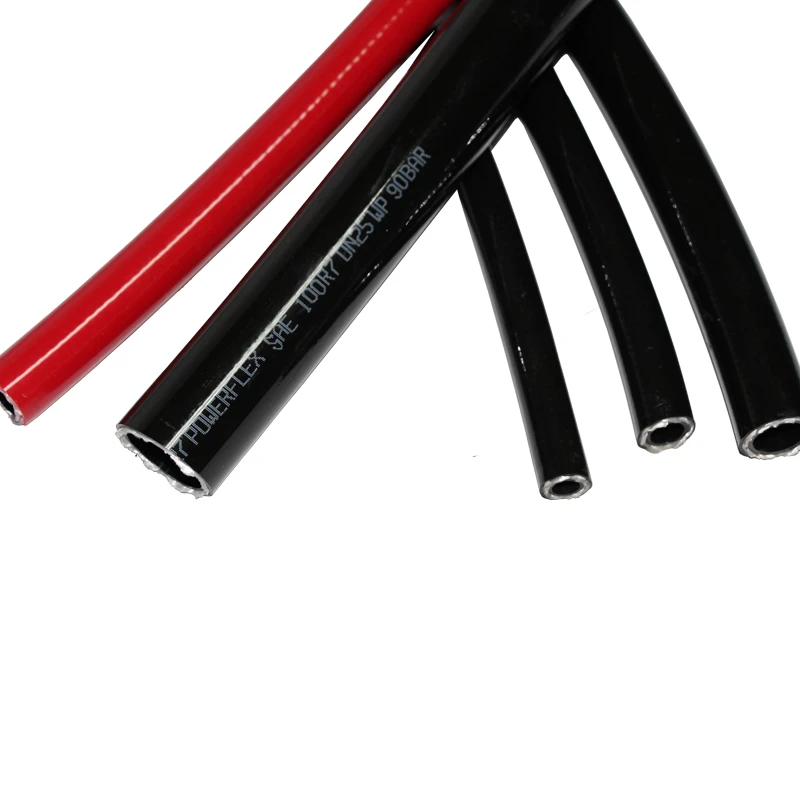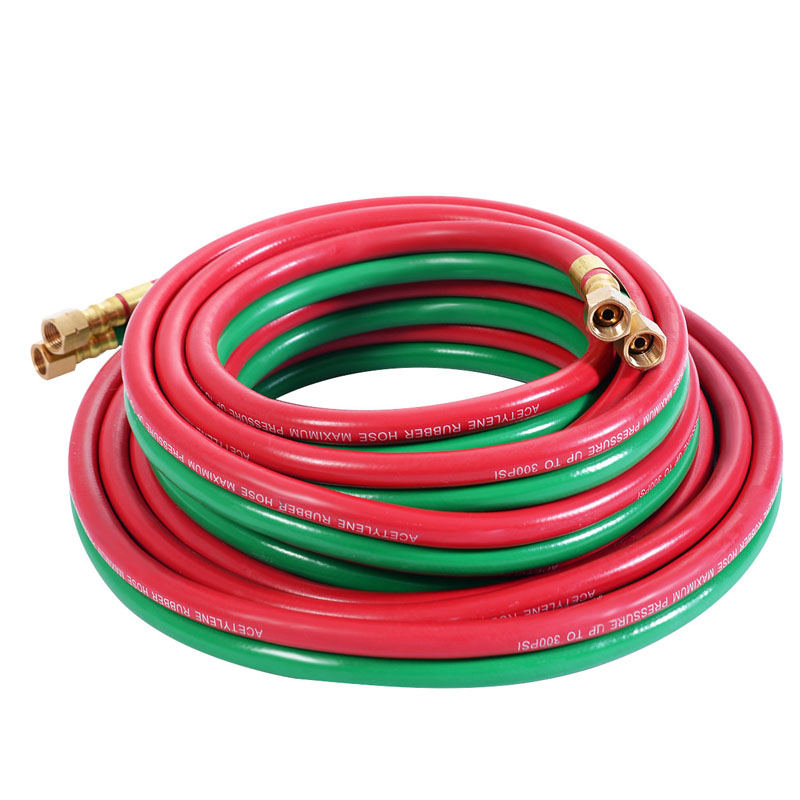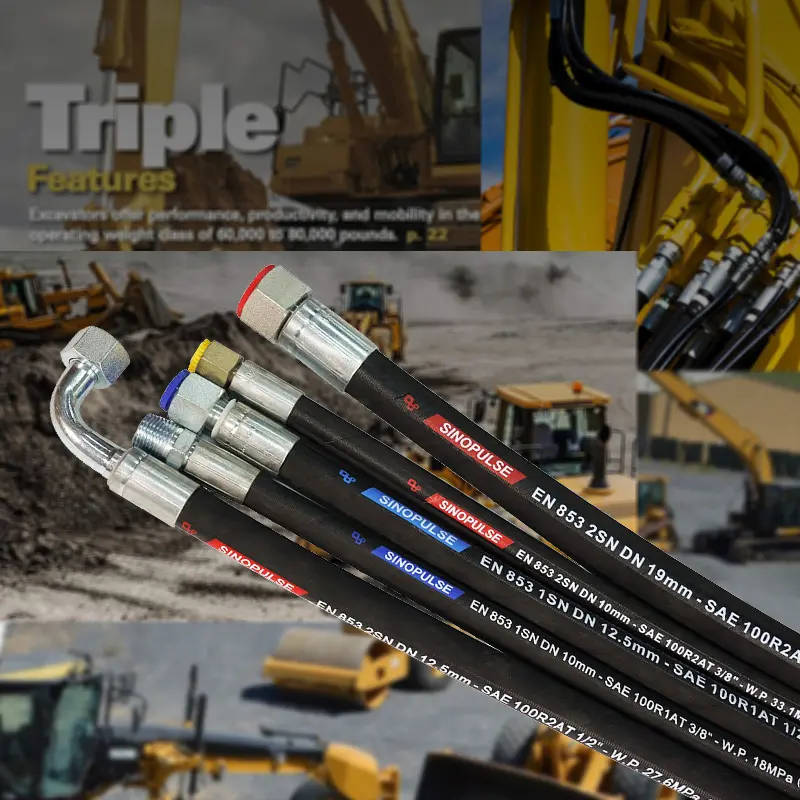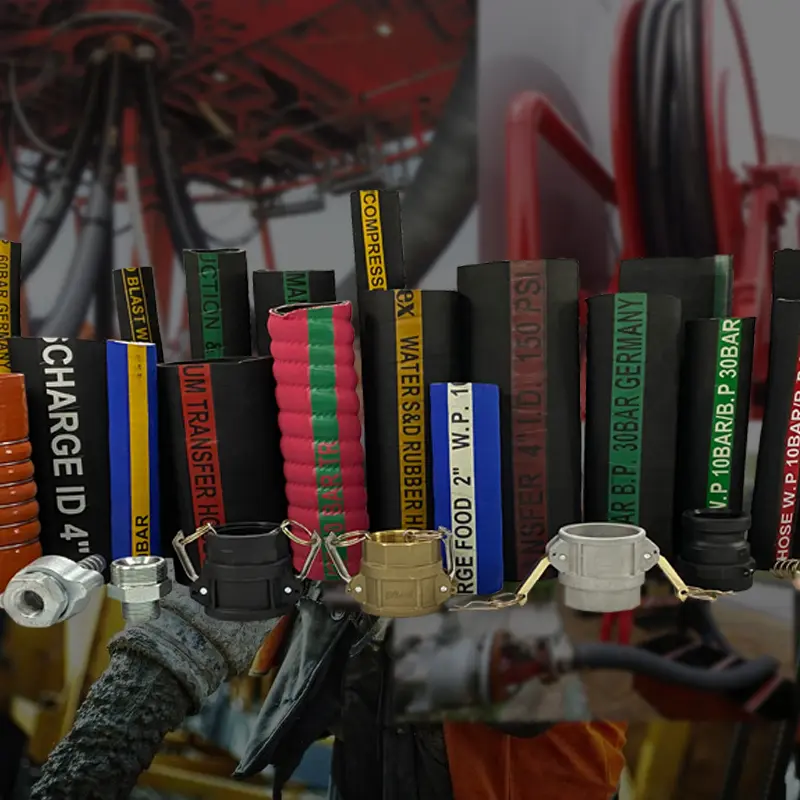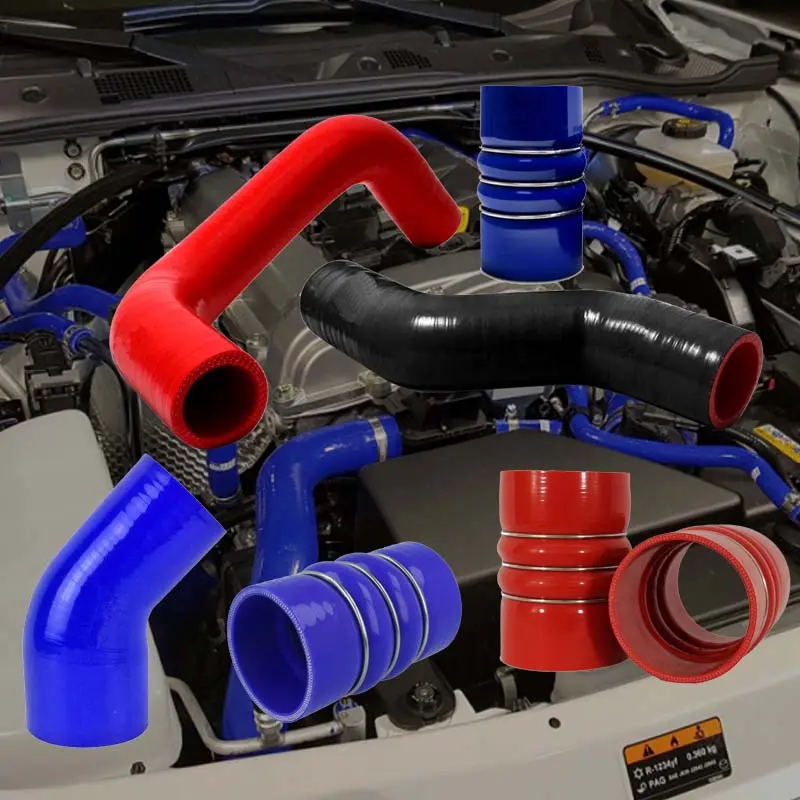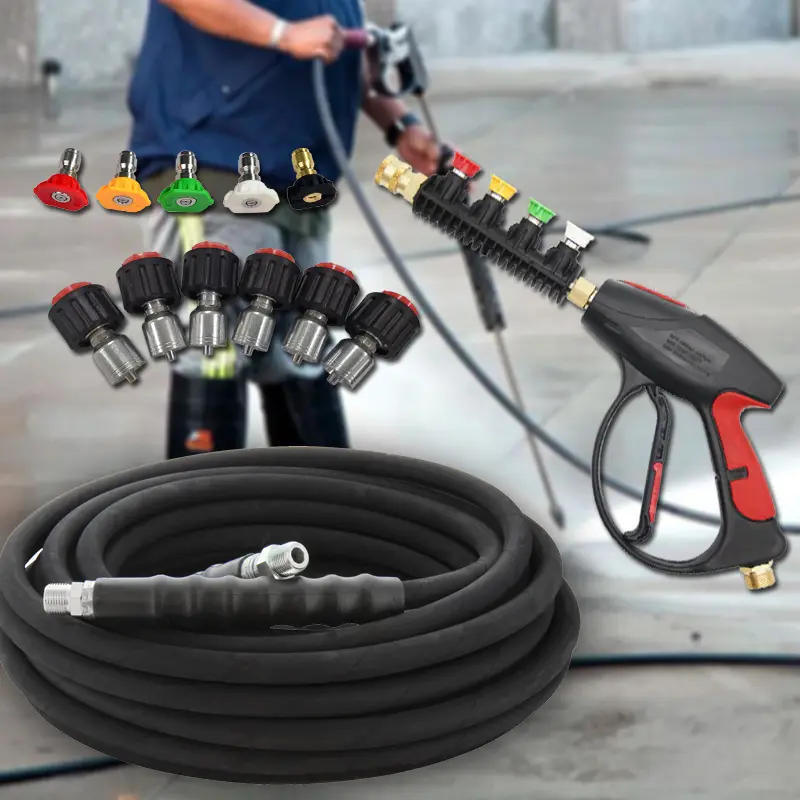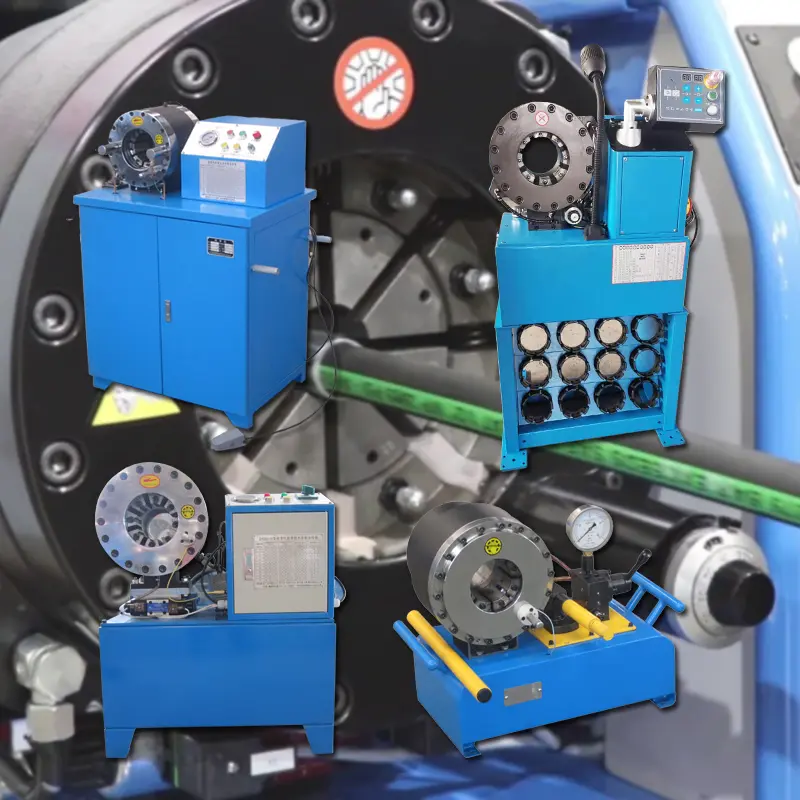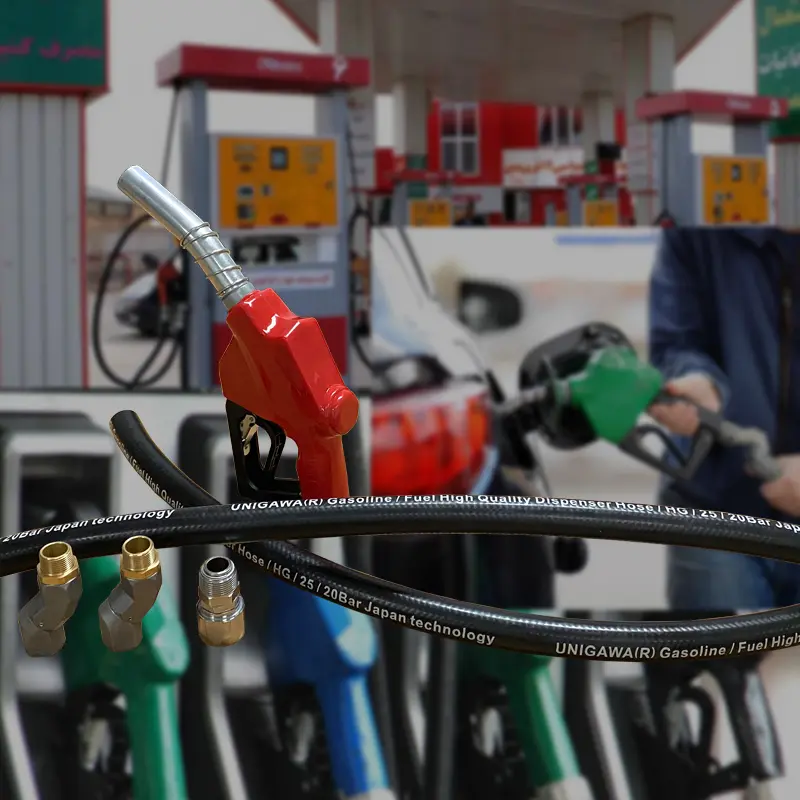Hydraulic Hose serves as a critical flexible connector in hydraulic systems, facilitating the transfer of pressurized hydraulic fluid between components such as pumps, cylinders, and valves. Constructed from reinforced synthetic rubber or thermoplastic materials with multiple layers, hydraulic hose is engineered to withstand high internal pressures while accommodating vibrations, thermal expansion, and positional movements within machinery. Its design balances flexibility with strength, allowing for efficient routing in complex system layouts without compromising on durability. In industrial, mobile, and aerospace applications, hydraulic hose plays a vital role in transmitting power through fluid pressure, making it an indispensable element in modern hydraulic systems.
Custom Hydraulic Hoses are tailored solutions designed to meet specific application requirements that standard hoses cannot address
These specialized assemblies are crafted by adjusting parameters such as length, diameter, reinforcement type, and end fitting configurations to match unique system layouts, pressure demands, and environmental conditions. Custom Hydraulic Hoses are particularly valuable in compact machinery where space constraints require precise routing, or in specialized industries like offshore drilling where hoses must resist corrosion from saltwater. By allowing engineers to optimize hose performance for their exact needs, Custom Hydraulic Hoses enhance system efficiency and reduce the risk of leaks or failures in non-standard setups.
High Pressure Hydraulic Hose is a specialized variant engineered to handle extreme fluid pressures commonly found in heavy-duty hydraulic systems
These hoses feature enhanced reinforcement layers—typically high-tensile steel wire braids or spirals—that provide the structural integrity needed to contain pressures ranging from 3,000 to over 10,000 psi. High Pressure Hydraulic Hose is characterized by its high-pressure resistance and can withstand high-pressure working environments. Common applications include construction equipment, agricultural machinery, and industrial presses, where reliable performance under intense pressure is essential for safe and efficient operation.
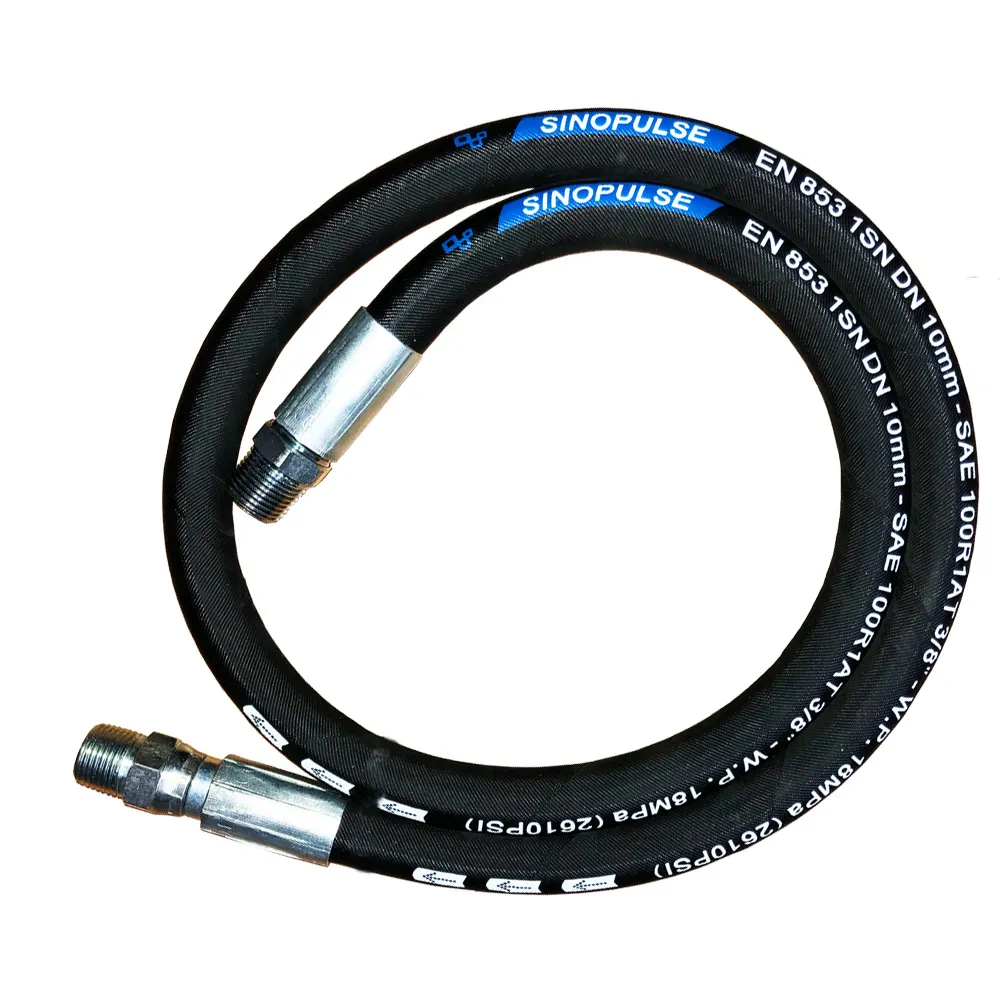
Hydraulic Hoses come with various connector types designed to ensure secure, leak-free connections in hydraulic systems
Common fitting types include threaded fittings (both male and female), which use screw threads to create a tight seal; flanged fittings, which utilize bolts to clamp hose ends together for high-pressure applications; and push-to-connect fittings, which allow for quick assembly without specialized tools. Other types include compression fittings, which compress a ferrule around the hose to form a seal, and crimped fittings, where a metal sleeve is permanently crimped onto the hose end for maximum strength. The choice of fitting depends on factors like pressure rating, fluid type, and assembly requirements.
A typical hydraulic hose assembly consists of three main components working together to form a complete functional unit
The first component is the Hydraulic Hose itself, which forms the flexible conduit for fluid transfer. The second component is the end fittings, which attach to the hose ends and connect to other system components. The third component is the crimping or coupling mechanism that secures the fittings to the hose, ensuring a permanent, pressure-tight bond. Some assemblies may also include protective sleeves or covers to shield the hose from external damage, but the core structure remains centered on these three essential parts.
Selecting the right Hydraulic Hose involves evaluating several critical factors to ensure compatibility and performance
First, consider the system’s operating pressure, ensuring the hose’s pressure rating exceeds the maximum working pressure to provide a safety margin. Next, assess the fluid type, as different hydraulic fluids (mineral oil, water-glycol, synthetic esters) require compatible inner tube materials. Temperature range is another key factor, as both ambient and fluid temperatures affect hose material integrity. Additionally, consider environmental conditions such as exposure to abrasion, chemicals, or UV radiation, which may require specialized outer covers. Finally, match the hose diameter to flow rate requirements to minimize pressure drop and ensure efficient fluid transfer.
In summary, Hydraulic Hose is a fundamental component in fluid power systems, with variants like Custom Hydraulic Hoses, High Pressure Hydraulic Hose, and various standard types addressing diverse application needs. Understanding fitting types — from threaded to flanged designs — and recognizing that hydraulic hose assemblies consist of hose, fittings, and coupling mechanisms is essential for proper system design. By carefully selecting Hydraulic Hoses based on pressure, fluid type, temperature, and environment, engineers can ensure reliable, efficient operation in industrial, mobile, and specialized hydraulic systems. As hydraulic technology advances, these components will continue to evolve, maintaining their critical role in power transmission across countless industries.
Hydraulic Hose FAQs
1. What are the different types of hydraulic hose fittings available?
Hydraulic hose fittings come in various types, including permanent crimp fittings, reusable field-attachable fittings, flange fittings, O-ring face seal (ORFS) fittings, and JIC (37-degree flare) fittings. Each type serves specific pressure ratings and connection requirements, with materials ranging from carbon steel to stainless steel for corrosion resistance. Proper selection depends on the hose’s inner diameter, working pressure, and compatibility with hydraulic fluid.
2. What components make up a complete hydraulic hose assembly?
A hydraulic hose assembly consists of three main parts: the hydraulic hose itself, end fittings (such as elbows or straight connectors), and ferrule or crimp sleeves that secure the fittings to the hose. Additional elements may include protective sleeves or armor for abrasion resistance. Proper assembly requires precise crimping tools to ensure leak-free performance under high pressure.
3. How should one select the right hydraulic hose for an application?
Choosing the correct hydraulic hose involves evaluating operating pressure, temperature range, fluid compatibility, and environmental conditions. Reinforcement layers (such as wire braid or spiral) determine pressure capacity, while the inner tube material must resist degradation from hydraulic oil or chemicals. Flexibility and bend radius are also critical for routing in tight spaces.
4. What maintenance practices extend the lifespan of a hydraulic hose?
Regular inspections for cracks, abrasions, or bulges can prevent hydraulic hose failures. Avoiding sharp bends, excessive torsion, or exposure to UV rays and extreme heat helps maintain integrity. Proper storage away from ozone sources and periodic pressure testing further ensure reliability in demanding applications.
5. Why is burst pressure rating important for hydraulic hose selection?
The burst pressure rating indicates the maximum pressure a hydraulic hose can withstand before failure, typically 4 times its working pressure. Selecting a hose with a suitable burst rating ensures safety margins for pressure spikes or system surges. This is especially critical in heavy machinery or mobile equipment where sudden load changes occur.
Product Application









